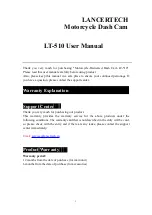
Pike Technical Manual
V5.2.0
227
Controlling image capture
SIS: Definition
Secure image signature (SIS)
is the synonym for data, which is inserted into an
image to improve or check image integrity.
With the new firmware 3.x, all Pike models can insert
•
Time stamp (1394 bus cycle time at the beginning of integration)
•
Trigger counter (external trigger seen only)
•
Frame counter (frames read out of the sensor)
•
AOI (x, y, width, height)
•
Exposure (shutter) and gain
•
Input and output state on exposure start
•
Index of sequence mode
•
Serial number
•
User value
into a selectable line position within the image. Furthermore the trigger counter
and the frame counter are available as advanced registers to be read out directly.
SIS: Scenarios
The following scenarios benefit from this feature:
•
Assuming camera runs in
continuous mode
, the check of monotonically
changing bus cycle time is a simple test that no image was skipped or lost
in the camera or subsequently in the image processing chain.
•
In (synchronized)
multi camera applications
, the time stamp can be used
to identify those images, shot at the same moment in time.
•
The cross-check of the frame counter of the camera against the frame
counter of the host system also identifies any
skipped or lost images
during transmission.
•
The cross-check of the trigger counter against the frame counter in the
camera can identify a
trigger overrun
in the camera.
•
AOI can be inserted in the image if it was set as a variable e.g. in a
sequence.
•
Exposure/gain scenario parameters can be inserted in the image if set as a
variable in e.g. sequence mode to identify the imaging conditions.
•
Inserting input and output state on exposure start can be helpful when
working with input and output signals.
•
Index of sequence mode can be inserted if SIS is used together with
sequence mode.
•
Serial number inserted in the image helps to document/identify the cam-
era in e.g. multi camera applications.
















































